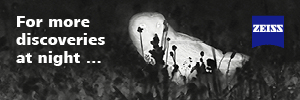| This article is incomplete. This article is missing one or more sections. You can help the BirdForum Opus by expanding it. |
- Anthochaera carunculata
Identification
These birds have highly developed brush-tipped tongues adapted for nectar feeding. The tongue is flicked rapidly and repeatedly into a flower, the upper mandible then compressing any liquid out when the bill is closed. It has a fleshy reddish wattle on the side of the neck. The plumage is grey-brown on the body, with prominent white streaks and yellow on the belly. The tail is long with a white-tip and the face is pale. Young Red Wattlebirds are duller than the adult and have a brown eye. The wattle is also very small and pale.
Distribution
Taxonomy
Subspecies
There are 3 subspecies[1]:
- A. c. carunculata:
- East Australia (south-eastern Queensland to southern and central Victoria)
- A. c. clelandi:
- Kangaroo Island (South Australia)
- A. c. woodwardi: South West Western Australia to Eyre Peninsula (South Australia)
Habitat
Open forest and woodland, near human habitation.
Behaviour
It makes its nest in a tree and lays 2-3 eggs. As well as nectar, its diet includes insects and fruit.
References
- Clements, J. F., T. S. Schulenberg, M. J. Iliff, S. M. Billerman, T. A. Fredericks, B. L. Sullivan, and C. L. Wood. 2019. The eBird/Clements Checklist of Birds of the World: v2019. Downloaded from http://www.birds.cornell.edu/clementschecklist/download/
Recommended Citation
- BirdForum Opus contributors. (2024) Red Wattlebird. In: BirdForum, the forum for wild birds and birding. Retrieved 28 April 2024 from https://www.birdforum.net/opus/Red_Wattlebird
External Links
GSearch checked for 2020 platform.1




